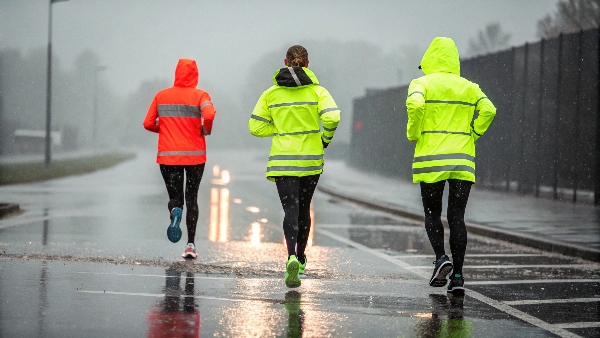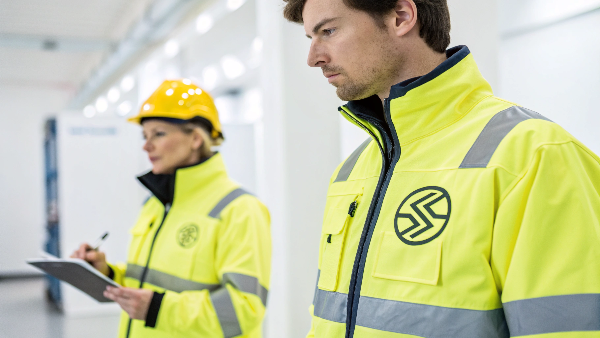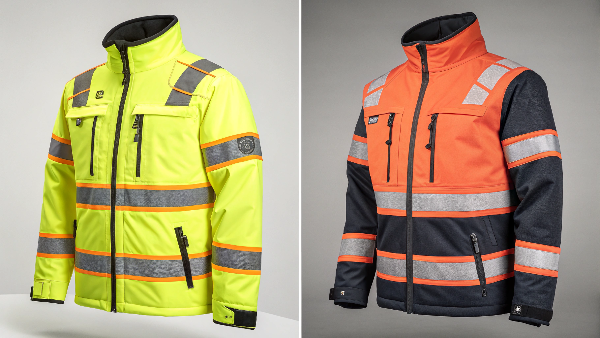Working in protective gear can make you incredibly hot. This heat can lead to serious discomfort and even danger. But, there are effective ways to manage it.
To stay cool in protective clothing, prioritize breathable, lightweight fabrics and moisture-wicking tech. Consider cooling accessories like neck wraps or vests. Stay hydrated and take breaks in cooler spots. We at Vissafety innovate in cooling products like vests and towels with high-visibility materials.
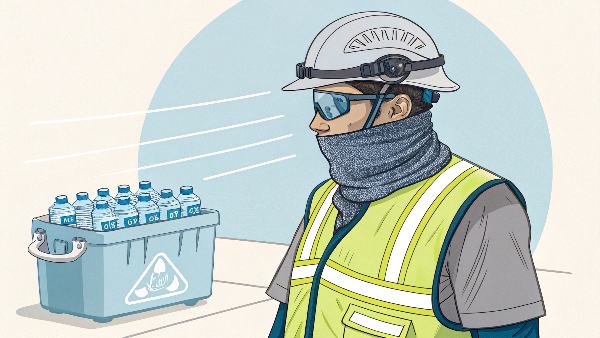
Feeling the heat in your essential safety gear is a common problem. It's not just uncomfortable; it can really affect your work and well-being. I've seen how challenging it can be for teams who need to wear protective clothing all day, especially when the temperature climbs. But we've learned a lot over the years about how to tackle this issue. You might be wondering how to specifically address different aspects of heat stress. So, let's look into some key questions and find practical answers to keep everyone safer and more comfortable.
How can we protect workers from heat?
Workers often face grueling heat on the job. This exposure can lead to exhaustion or serious health risks. Thankfully, several strategies can safeguard them effectively.
Protect workers from heat by using engineering controls like shade, administrative controls like work/rest cycles, and providing proper PPE. Training on heat stress signs is also vital. Vissafety offers PPE designed to help manage heat effectively for various industries.
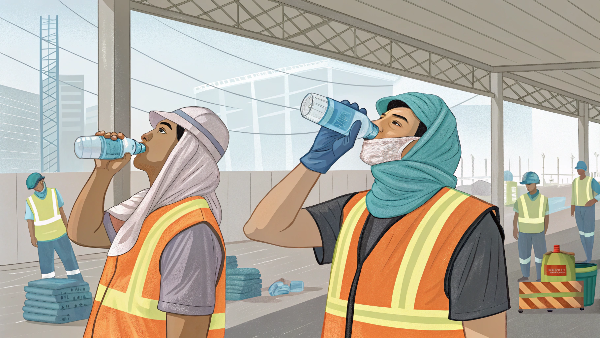
Protecting workers from heat is a big responsibility. It's not just about one single solution. We need a layered approach. First, engineering controls1 are important. This means things like providing shaded areas for breaks or improving ventilation where possible. I remember a client in the construction sector who set up large fans and misting stations, which made a noticeable difference. Second, administrative controls play a key role. This includes adjusting work schedules, so the hardest tasks are done during cooler parts of the day. Acclimatizing new workers to the heat gradually is also very important. And, of course, providing the right Personal Protective Equipment (PPE)2 is crucial. This is where we at Vissafety focus, by developing high-visibility clothing that is also breathable and includes cooling technologies. Training workers to recognize the signs of heat stress3 in themselves and their colleagues is another critical step.
| Protection Strategy | Examples | Vissafety's Contribution |
|---|---|---|
| Engineering Controls | Shade, ventilation, cooling fans | Advising on PPE that complements these |
| Administrative Controls | Work/rest cycles, acclimatization, scheduling | Providing PPE suitable for varied work schedules |
| Personal Protective Equipment (PPE) | Cooling vests, breathable fabrics, hats | Manufacturing innovative cooling PPE |
| Training | Recognizing heat stress signs, first aid | Supplying compliant PPE for safe work |
What PPE is good for hot weather?
Choosing the right PPE for hot weather is tough. The wrong gear can make workers even hotter. But, selecting suitable PPE can greatly improve comfort and safety.
Good PPE for hot weather includes items made from lightweight, breathable, and moisture-wicking fabrics4. Cooling vests, neck wraps, and light-colored clothing5 are excellent choices. Vissafety specializes in innovative, cooling high-visibility PPE designed for these conditions.
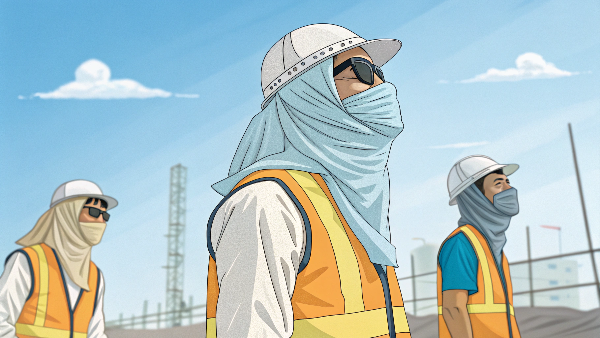
When it's hot, the PPE workers wear can either help or make things worse. The best PPE for hot weather focuses on a few key things. First, fabric choice is essential. We look for materials that are lightweight and breathable. This allows air to circulate and sweat to evaporate, which is the body's natural cooling mechanism. Moisture-wicking fabrics are great because they pull sweat away from the skin. Second, consider specialized cooling gear. At Vissafety, we've developed cooling vests6 that use different technologies, like evaporative cooling or phase change materials, to actively lower body temperature. Cooling neck wraps and bandanas can also provide significant relief to pulse points. Light-colored clothing is another simple but effective choice because it reflects sunlight instead of absorbing it. Even things like vented hard hats can make a difference. It's about finding a balance between protection and comfort. We always tell our clients that the PPE needs to be worn to be effective, and comfort is key to compliance in the heat.
| PPE Feature | Benefit in Hot Weather | Vissafety Example |
|---|---|---|
| Lightweight Fabric | Reduces burden, improves comfort | Our lightweight safety vests |
| Breathable Material | Allows air circulation, aids evaporation | Mesh panel inserts in jackets |
| Moisture-Wicking | Pulls sweat away from skin | Performance fabric t-shirts |
| Cooling Technology | Actively lowers body temperature | Our range of cooling vests |
| Light Colors | Reflects sunlight, absorbs less heat | Offering light-colored hi-vis options |
How to stay cool in coveralls?
Coveralls offer full-body protection but can trap heat. This makes working in them very uncomfortable in warm conditions. However, there are ways to manage this.
To stay cool in coveralls, choose breathable, lightweight materials7 and look for vents. Wear moisture-wicking base layers8. Utilize cooling accessories9 and ensure proper hydration and breaks. Vissafety can customize coveralls with features to enhance coolness.
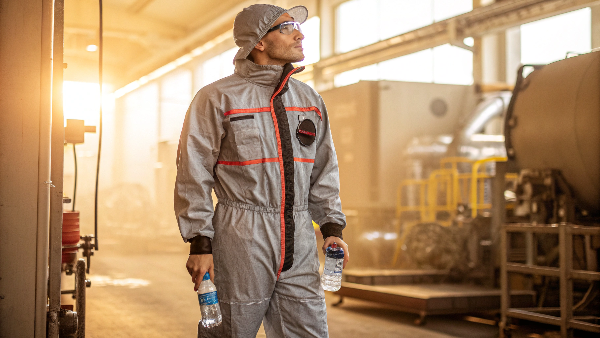
Coveralls are necessary for many jobs, providing excellent protection. But, they can feel like an oven in hot weather. I've heard this from many workers over the years. So, how can you stay cooler? First, the choice of coverall matters a lot. Look for options made from lighter, more breathable fabrics. Some modern coveralls even have built-in ventilation, like mesh panels in the back or under the arms. These small features can make a big difference. What you wear underneath the coverall is also important. A moisture-wicking base layer can help manage sweat and keep you feeling drier. Avoid cotton base layers, as they tend to hold moisture. Then, think about cooling accessories. Some cooling vests are designed to be worn under coveralls. Even a cooling neck wrap can help. And, as always, hydration and regular breaks in a cool environment are non-negotiable. At Vissafety, we understand these challenges. We work with clients to see if we can incorporate lighter materials or design features into their custom coverall orders to help combat the heat.
How do construction workers stay cool in the heat?
Construction work is physically demanding and often outdoors. This makes workers highly susceptible to heat stress. But, effective cooling strategies are available for them.
Construction workers stay cool by hydrating frequently, taking breaks in shade, wearing lightweight and breathable PPE, and using cooling accessories. Early start times and acclimatization also help. Vissafety supplies robust, cooling PPE suitable for construction sites.
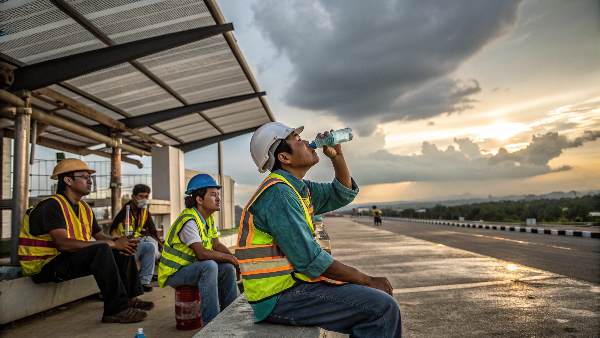
Construction sites can get incredibly hot, especially during summer. I've visited many sites and seen firsthand the challenges workers face. So, how do they manage? It's a combination of things. Hydration is number one. Site managers often provide plenty of water and encourage workers to drink regularly, even before they feel thirsty. Scheduled breaks in shaded or air-conditioned areas are also vital. Many construction companies adjust work schedules, starting earlier in the day to avoid the peak afternoon heat. The right PPE is crucial. We supply many construction clients with high-visibility vests and shirts made from lightweight, breathable, and moisture-wicking fabrics. Some workers also use cooling vests or neck gaiters. Acclimatization is another important factor; workers gradually get used to the heat over several days. A buddy system is often used, where workers look out for each other for signs of heat illness. It's a tough environment, but with careful planning and the right gear, risks can be managed.
| Strategy for Construction Workers | Details | Vissafety's Role |
|---|---|---|
| Hydration | Constant access to water, electrolyte drinks | N/A (but our PPE allows for movement) |
| Work/Rest Cycles | Regular breaks in cool, shaded areas | Providing comfortable PPE for breaks |
| Appropriate PPE | Lightweight, breathable, hi-vis, cooling accessories | Key supplier of such PPE |
| Scheduling | Early starts, avoiding peak heat | PPE designed for all-day wear |
| Acclimatization | Gradual exposure for new workers | N/A |
| Buddy System | Monitoring colleagues for heat stress signs | Visible PPE helps in monitoring |
What is the OSHA rule for heat?
Employers worry about OSHA compliance regarding heat. Navigating these regulations can seem complex. Understanding the core principles simplifies this concern greatly.
OSHA doesn't have a specific temperature standard for heat. However, under the General Duty Clause, employers must protect workers from recognized serious hazards, including heat. NIOSH provides key recommendations: water, rest, shade.
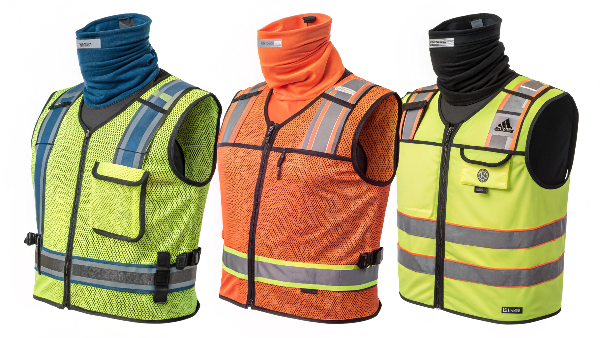
Many people ask about specific OSHA rules for heat, like a maximum temperature. It's important to know that OSHA currently does not have a specific standard that sets a maximum permissible temperature exposure limit. However, this doesn't mean employers have no obligations. OSHA’s General Duty Clause, Section 5(a)(1) of the Occupational Safety and Health Act, requires employers to provide a workplace free from recognized hazards that are causing or are likely to cause death or serious physical harm. Heat stress is definitely a recognized hazard. So, employers must take steps to prevent it. OSHA often refers to recommendations from NIOSH (National Institute for Occupational Safety and Health), which are "Water. Rest. Shade." They also emphasize the importance of an acclimatization plan for new workers or those returning after an absence. Employers should also train workers on the signs and symptoms of heat illness and how to respond. Using the heat index (which combines temperature and humidity) can help assess risk levels. Vissafety helps by providing PPE that supports these preventative measures.
What temperature is too hot for employees to work in?
Employees often wonder when it's officially too hot to work. The lack of a clear number can be confusing. The answer depends on several factors, not just temperature.
There's no single temperature that's universally "too hot" for work. It depends on the heat index (temperature and humidity), workload, PPE worn, and acclimatization. Risk assessment using OSHA/NIOSH guidelines is key, not a fixed number.
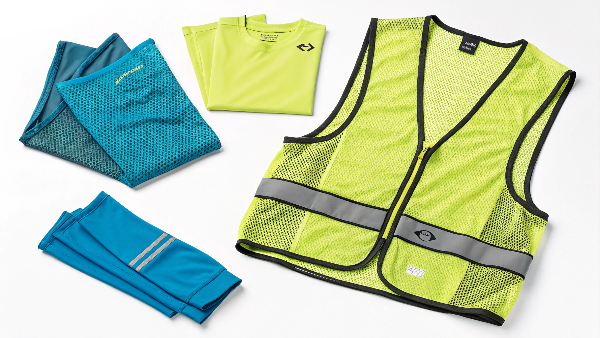
It's a common question: what exact temperature is considered too hot to work? Unfortunately, there isn't a simple, magic number. It's not like a thermostat setting where above X degrees, work stops. The reason is that "too hot" depends on a combination of factors. The air temperature alone doesn't tell the whole story. Humidity plays a huge role; high humidity makes it harder for sweat to evaporate, which is how our bodies cool down. This combination is measured by the heat index. Then, you have to consider the workload. Is it light office work or strenuous outdoor labor? The type of clothing and PPE worn also matters, as some can trap heat. And, as mentioned before, are the workers acclimatized to the heat? OSHA and NIOSH provide guidelines based on the heat index, categorizing risk levels (e.g., lower, moderate, high, very high to extreme). For example, a heat index of 91°F might be a caution point for some activities, while higher values trigger more protective measures. So, it’s about assessing the specific conditions and risks rather than looking for one fixed temperature.
| Heat Index | Risk Level | Protective Measures Recommended by NIOSH/OSHA |
|---|---|---|
| Below 91°F (33°C) | Lower (Caution) | Basic heat safety and planning. |
| 91°F to 103°F (33-39°C) | Moderate | Implement precautions, remind workers to drink water often, schedule frequent breaks. |
| 103°F to 115°F (39-46°C) | High | Alert workers of high risk. More frequent breaks, close monitoring. |
| Above 115°F (46°C) | Very High to Extreme | Even more aggressive protective measures, reschedule non-essential work. |
What is the legal max temperature to work in?
People often search for a legal maximum temperature for work. This quest for a specific number can be frustrating. The reality is that regulations are more nuanced.
No universal legal maximum temperature for work exists in most places. Instead, laws like OSHA's General Duty Clause require employers to protect workers from heat hazards. Some specific states or regions might have their own rules.
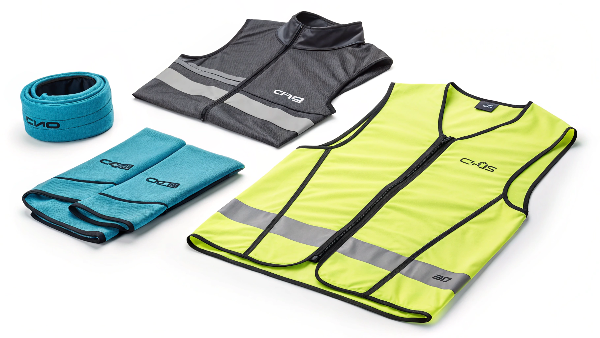
Many of our clients, especially those new to managing large workforces in varied climates, ask about the "legal maximum temperature." It's a natural question when you're trying to ensure compliance and worker safety. However, in the United States at the federal level, OSHA does not define a specific legal maximum temperature for workplaces. Instead, as we've discussed, they rely on the General Duty Clause. This clause mandates that employers must keep their workplaces free of recognized serious hazards, and extreme heat is one such hazard. Some states, like California, Washington, and Minnesota, have their own heat illness prevention standards that are more specific and may include temperature triggers for certain actions. So, it's important for businesses to check their local and state regulations in addition to federal OSHA guidelines. The focus is generally on implementing a comprehensive heat illness prevention program, which includes providing water, rest, shade, acclimatization procedures, training, and monitoring, rather than just adhering to a single temperature limit.
How to stay cool working in 100 degree weather?
Working in 100-degree weather sounds unbearable. Such extreme heat poses significant risks. But with the right approach, it's possible to manage these conditions safely.
To stay cool in 100°F (38°C) weather, intensify all strategies: drink water every 15 minutes, take frequent, longer breaks in very cool areas, wear the lightest, most breathable PPE, and use active cooling like vests. Adjust work schedules drastically.
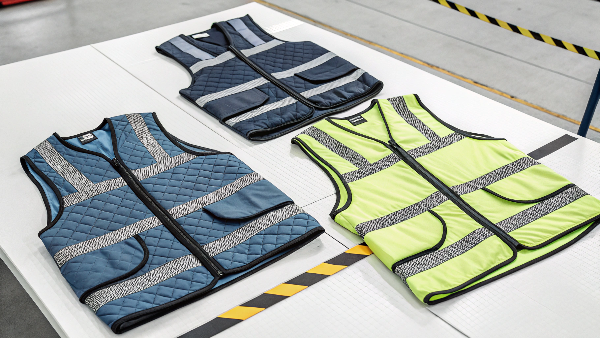
When the thermometer hits 100°F (around 38°C), that's serious heat. Working in these conditions requires extreme caution and a very robust plan. We've had clients operate in desert environments, and their strategies are intense. First, hydration becomes even more critical. Workers might need to drink small amounts of water as often as every 15 minutes. Electrolyte replacement is also important. Breaks need to be longer and in significantly cooler environments, ideally air-conditioned. Work schedules often have to be adjusted dramatically – perhaps starting very early in the morning, taking a long break during the hottest part of the day, and resuming in the late afternoon if possible. The lightest, most breathable PPE available is essential. This is where innovations like Vissafety's advanced cooling vests and moisture-wicking fabrics really come into play. Active cooling is almost a necessity, not a luxury. Constant monitoring for any signs of heat illness is vital. This isn't just about being uncomfortable; it's about preventing life-threatening situations. Every single precaution needs to be amplified.
What temperature is too hot to work in construction?
Construction work in high heat is dangerous. Identifying when it's "too hot" is crucial for safety. There's no single number, but risk levels are clear.
For construction, there's no fixed "too hot" temperature. However, heat index values above 91°F (33°C) signal increasing risk, requiring more precautions. Above 103°F (39°C) means high risk, needing aggressive protective measures and careful monitoring.
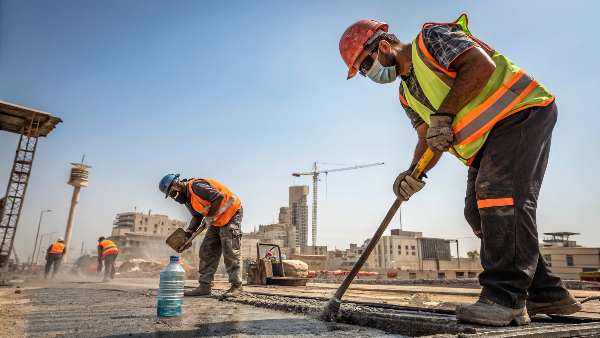
Construction work is tough, and when you add extreme heat, it becomes even more hazardous. Workers are often outdoors, doing physically demanding tasks, and wearing PPE. So, what temperature is too hot for them? Again, there's no absolute cutoff temperature by law. Instead, it’s about risk assessment using the heat index. For construction, particular attention is paid once the heat index climbs. NIOSH and OSHA guidelines suggest that when the heat index is between 91°F and 103°F (moderate risk), construction employers should implement precautions like frequent water breaks and access to shade. When the heat index exceeds 103°F (high risk) and especially above 115°F (very high to extreme risk), much more aggressive measures are needed. This could include rescheduling all non-essential work, ensuring very frequent and longer breaks in cool locations, and providing active cooling PPE. Site-specific heat illness prevention plans are essential in construction. We work with many construction companies to ensure their high-visibility PPE is as breathable and cool as possible, helping them meet these challenges.
Do cooling vests work?
Cooling vests are often discussed as a solution for heat. People wonder if they are truly effective. The answer is yes, they can make a significant difference.
Yes, cooling vests work by actively reducing body temperature. Different types exist, like evaporative, phase change, or ice pack vests. They can improve comfort and reduce heat strain. Vissafety offers innovative cooling vest designs for various needs.
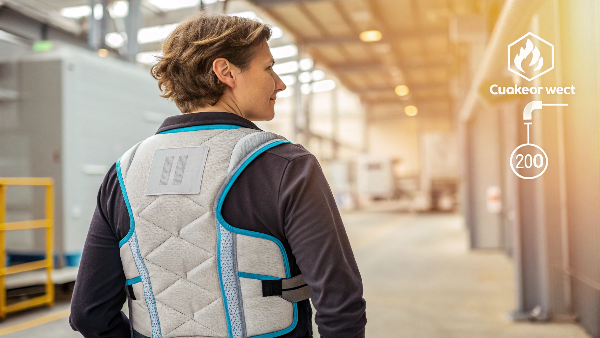
I get asked this a lot: do cooling vests actually work? And the answer is generally yes, they can be very effective. There are several types of cooling vests, and they work in different ways. Evaporative cooling vests require water; as the water evaporates, it cools the wearer. These work best in low to moderate humidity. Phase Change Material (PCM) vests use special packs that solidify at a certain temperature and absorb body heat as they melt, keeping you cool for a period. Ice pack vests use frozen gel packs. There are also circulating water vests, though these are more complex. The benefits are clear: they can help lower core body temperature, reduce heat strain, and improve comfort and productivity. I’ve seen workers’ demeanors change completely after putting on a cooling vest on a hot day. However, they have limitations. Some can be a bit bulky, the cooling effect has a limited duration before needing to be "recharged" (re-soaked, re-frozen, etc.), and there's a cost. At Vissafety, we've been focusing on developing cooling vests that are not only effective but also lightweight, comfortable under other gear, and suitable for various industrial applications, including high-visibility versions.
| Type of Cooling Vest | How It Works | Best For | Considerations |
|---|---|---|---|
| Evaporative | Water evaporation provides cooling | Low to moderate humidity, active workers | Needs airflow, less effective in high humidity |
| Phase Change (PCM) | Material absorbs heat as it melts/liquefies | Moderate to high heat, various humidity levels | Limited duration, recharge time |
| Ice Pack | Frozen gel packs absorb heat | High heat, can be intense cooling | Can be bulky, condensation, short duration |
| Circulating Water | Cool water circulates through tubes in the vest | Specialized applications, very high heat | More complex, may require power source |
Conclusion
Staying cool in protective clothing requires breathable fabrics, cooling accessories, hydration, and smart breaks. Vissafety offers innovative solutions to help achieve this effectively.
-
Explore various engineering controls that can significantly reduce heat exposure for workers, enhancing their safety and productivity. ↩
-
Discover the latest innovations in PPE designed for heat protection, ensuring safety and comfort for workers in high-temperature environments. ↩
-
Understanding heat stress prevention is crucial for worker safety. Explore this resource to learn effective strategies and guidelines. ↩
-
Explore this link to understand how these fabrics enhance comfort and safety for workers in hot conditions. ↩
-
Discover the science behind light-colored clothing and its effectiveness in reflecting sunlight to keep workers cool. ↩
-
Learn about the technology behind cooling vests and how they can help maintain a safe body temperature in extreme heat. ↩
-
Discover the top materials that keep you cool and comfortable in coveralls, enhancing your work experience in warm conditions. ↩
-
Learn how moisture-wicking fabrics can significantly improve comfort and dryness while wearing coveralls in hot weather. ↩
-
Explore various cooling accessories that can enhance your comfort and help you stay cool while working in coveralls. ↩

